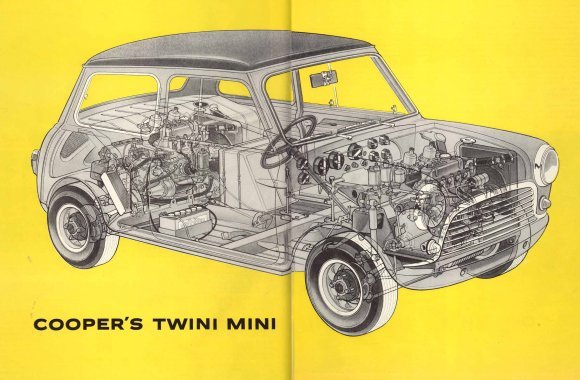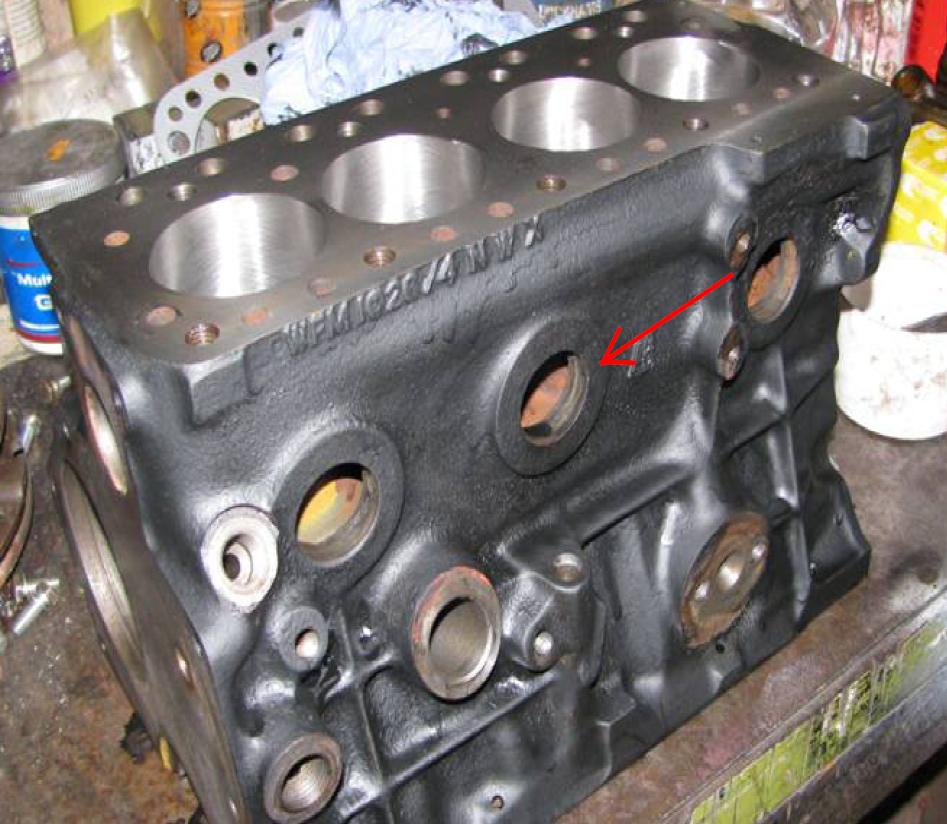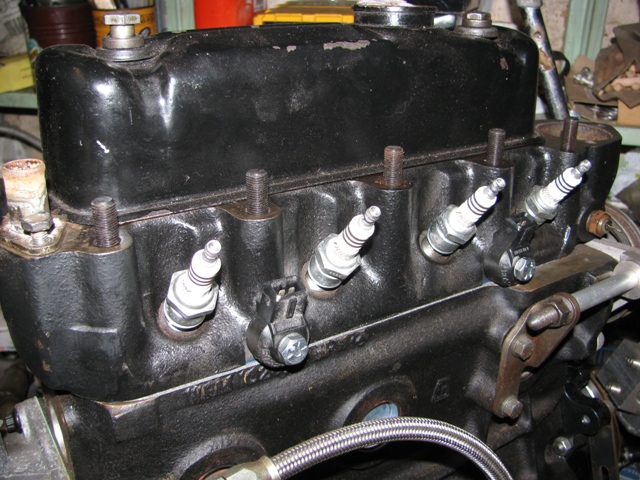| Page: |
| Home > A-Series EFI / Injection > MS3X Knock Module | |||||||
|
8604 Posts Member #: 573 Formerly Axel Podland |
30th Nov, 2013 at 05:41:35pm
Tempted by the 10% discount on offer at DIY Autotune this weekend, I clicked the buy button on the MS3X Knock Module to go with some RTCs and other bits and pieces.
Saul Bellow - "A great deal of intelligence can be invested in ignorance when the need for illusion is deep."
|
||||||
|
8604 Posts Member #: 573 Formerly Axel Podland |
1st Dec, 2013 at 07:27:27pm
Just managed to procure a pair of Bosch sensor off eBay for £4.99 :)
Edited by Paul S on 1st Dec, 2013. Saul Bellow - "A great deal of intelligence can be invested in ignorance when the need for illusion is deep."
|
||||||
 (2)[/url] by [url=https://www.flickr.com/photos/150672766@N03/]Rod Sugden[/url], on Fli) 5988 Posts Member #: 2024 Formally Retired Rural Suffolk |
2nd Dec, 2013 at 08:40:50am
Co-incidentally I was reading up on this last week (probably because of the recent group buy thread), mostly just searching for information on the MS-Extra forums.
Schrödinger's cat - so which one am I ??? |
||||||
|
8604 Posts Member #: 573 Formerly Axel Podland |
2nd Dec, 2013 at 10:19:51am
On 2nd Dec, 2013 Rod S said:
I couldn't really find any info on how it can assign the two sensors to different cylinders - it's probably obvious to anyone who has an MS3 and hence seen it's configuration in TS, but I expected a bit more info from their website. It uses the sequential stuff to determine when a particular cylinder is likely to experience detonation and monitors the associated sensor during that time period. You set a start and duration for the "window" for each cylinder. It becomes reasonably clear once you have been through the setup screens a couple of times. On 2nd Dec, 2013 Rod S said:
In one of the very long threads on the forum, there was a German member who said he was getting really good results using the alternator bracket (on an A-series obviously but I don't think Turbo) but if you want to treat it as a pair of uneven two cylinder engines, shouldn't you be aiming to put one as close as possible to an outer cylinder and the other as close as possible to an inner (subject to all the normal criteria of keeping them away from mechanical noise) ? Even if the MS3 assigns the results per cylinder by engine timing it would seem sensible to have them as equidistant from their assigned cylinder if only to generate the same amplitude signals. I was thinking the same myself. Cylinder No. 4 is an obvious choice, it runs hotter, the holy grail of siamese port injection is to get enough fuel into the outer cylinders, so it can run leaner and it will have a higher cylinder pressure at the point of combustion due to charge robbing. Putting a sensor on the steady mount hole is ideal as it will be far away from other sources of noise and vibration. Cylinders 2 & 3 are less likely to detonate, but it would be worth using the extra sensor as it is available. My original thought was to put the sensor between 2 & 3, but I now think that it would be best to try and focus on No. 3. The problem with the inner cylinders is that whilst one of the cylinders is likely to experience knock, the other cylinder is going though valve overlap with the valve train going through a major transient. Given that 3 is more prone to detonation than 2 due to heat, then the optimum position would be to as close to the centreline of No. 3. Or would it? The sound travels through the casting not the water ???? Saul Bellow - "A great deal of intelligence can be invested in ignorance when the need for illusion is deep."
|
||||||
 (2)[/url] by [url=https://www.flickr.com/photos/150672766@N03/]Rod Sugden[/url], on Fli) 5988 Posts Member #: 2024 Formally Retired Rural Suffolk |
2nd Dec, 2013 at 11:55:46am
The first bit is what I expected, I just couldn't find it written up anywhere. That explains that module being MS3 only.
Schrödinger's cat - so which one am I ??? |
||||||
|
89 Posts Member #: 2380 Advanced Member Hamburg, Germany |
2nd Dec, 2013 at 12:09:53pm
sound will travel through everything. maybe with a differend speed.
|
||||||
|
8604 Posts Member #: 573 Formerly Axel Podland |
2nd Dec, 2013 at 12:18:30pm
OK, I've been taken too literally.
Saul Bellow - "A great deal of intelligence can be invested in ignorance when the need for illusion is deep."
|
||||||
|
89 Posts Member #: 2380 Advanced Member Hamburg, Germany |
2nd Dec, 2013 at 12:34:28pm
i personally don't think water will dampen enough to make any difference.
|
||||||
 (2)[/url] by [url=https://www.flickr.com/photos/150672766@N03/]Rod Sugden[/url], on Fli) 5988 Posts Member #: 2024 Formally Retired Rural Suffolk |
2nd Dec, 2013 at 01:00:53pm
On 2nd Dec, 2013 Paul S said: The frequency won't change from source to pickup (because the changes in wavelength at metal to water interface are reversed at the water to metal interface) but you lose amplitude in either medium (hence looking for shortest path). The real point is water is slower so I'm guessing the electronics read the metal bourne noise. Water would normally be considered incompressible (so minimal damping) but in an engine cooling system it's full of nucleate boiling so may have some damping effect. But that's the same on any engine.
OK, I've been taken too literally. What I meant was that the frequency and amplitude of the noise and vibration from detonation would be severely dampened by the water. On 2nd Dec, 2013 Paul S said: So go for it.... you know you want to A spotface on the block at the head flange area would be ideal. However, the engine is all bolted up and ready to go into the car. The above picture was just for illustration. However, the head is not bolted down yet :) 
Schrödinger's cat - so which one am I ??? |
||||||
|
8604 Posts Member #: 573 Formerly Axel Podland |
2nd Dec, 2013 at 01:54:35pm
My simple minds just thinks: Hit metal with a hammer and it rings.... Hit water with a hammer and you'll probably lose the hammer :)
Saul Bellow - "A great deal of intelligence can be invested in ignorance when the need for illusion is deep."
|
||||||
 11046 Posts Member #: 965 Post Whore Preston On The Brook |
2nd Dec, 2013 at 02:38:38pm
my 2pence worth not that it matters much, but do you really need two sensors? I mean, an engine block has a harmonic. That is to say, if you hit the block with a hammer, it will 'ring out'. so why do you need two sensors for a 4 cylinder inline engine? The firmware code will be able to determine which cylinder has fired, and the one sensor will pick up the noise as the other would.
On 26th Oct, 2004 TurboDave16v said:
Is it A-Series only? I think it should be... So when some joey comes on here about how his 16v turbo vauxhall is great compared to ours, he can be given the 'bird'... On 26th Oct, 2004 Tom Fenton said:
Yep I agree with TD........ |
||||||
|
8604 Posts Member #: 573 Formerly Axel Podland |
2nd Dec, 2013 at 03:12:06pm
No, I don't need 2 sensors, but for the sake of a bit of wire and a connector I can have 2 :)
Saul Bellow - "A great deal of intelligence can be invested in ignorance when the need for illusion is deep."
|
||||||
 (2)[/url] by [url=https://www.flickr.com/photos/150672766@N03/]Rod Sugden[/url], on Fli) 5988 Posts Member #: 2024 Formally Retired Rural Suffolk |
2nd Dec, 2013 at 08:34:37pm
On 2nd Dec, 2013 Sprocket said:
my 2pence worth not that it matters much, but do you really need two sensors? I mean, an engine block has a harmonic. That is to say, if you hit the block with a hammer, it will 'ring out'. so why do you need two sensors for a 4 cylinder inline engine? The firmware code will be able to determine which cylinder has fired, and the one sensor will pick up the noise as the other would. I partly agree... If the firmware uses the engine timing (as well as the software settings Paul has mentioned) then, theoretically, you only need one sensor on an inline engine. And let the software do the rest. I presume DIYautotune put the two channels in for the V8 market in the States. But having two sensors equidstance from their respective cylinders would surely get away from issues of sound speed (and attenuation) through castings. Common rail injection diesels monitor cylinder by cylinder from a single (occasionally two) sensors for four injection cycles and vary them individually. It's not clear if the MS3 code is quite that sophisticated ( especially as it's petrol, not diesel). On 2nd Dec, 2013 Sprocket said: For once we agreeBolting the sensor to as close to the deck of the block would be a better location since detonation will likely occur around 14 degrees ATDC (right at the top of the block). Its a solid slab of iron across the top. 
On 2nd Dec, 2013 Sprocket said: An interesting idea. I have sensor and a scope, I'll give it a try.
Test the theory by connecting the knock sensor to the sound car of your PC or scope and monitor the frequency when you hit the block at the opposite end. then hit the block again on the same end as the sensor is mounted. Will there be a significnt difference that one sensor will not pick up both? Schrödinger's cat - so which one am I ??? |
||||||
 (2)[/url] by [url=https://www.flickr.com/photos/150672766@N03/]Rod Sugden[/url], on Fli) 5988 Posts Member #: 2024 Formally Retired Rural Suffolk |
3rd Dec, 2013 at 05:26:03pm
Paul, what size (ie, bore diameter) engine are you considering.
Schrödinger's cat - so which one am I ??? |
||||||
|
8604 Posts Member #: 573 Formerly Axel Podland |
4th Dec, 2013 at 09:44:47am
The bore of the latest engine is 65.1mm.
Saul Bellow - "A great deal of intelligence can be invested in ignorance when the need for illusion is deep."
|
||||||
 (2)[/url] by [url=https://www.flickr.com/photos/150672766@N03/]Rod Sugden[/url], on Fli) 5988 Posts Member #: 2024 Formally Retired Rural Suffolk |
4th Dec, 2013 at 10:11:39am
On 4th Dec, 2013 Paul S said:
Is this the bandpass frequency? I can see settings for this, up to around 20kHz, but I've got no idea what it means. Care to explain? I make no claims to be an expert, I've just been researching it a lot recently 
Basically the frequency of sound given out by the "knock" is very dependant on the combustion chamber geometry, but specifically the cylinder bore diameter as, if it occurs, it will be sometime after TDC so the bore diameter dominates. There are a few formulea on the web but the most common one is 900/(pi x r) which simplified is 1800/(pi x bore) which gives me 7.85KHz and would give you 8.8KHz I would have expected the DIYautotune instructions (that presumably came with it) to provide a similar (probably the same) formula, or maybe it's in the "tooltips" that they seem to be using a lot in TS now (my version obviously doesn't show it if it is there as all my TS settings are MS2 projects). A bandpass filter is a way of rejecting sound at frequencies other than the chosen one (or more likely a chosen range a bit above and a bit below the calculated, or expected, one). Now back to Colin's point about why bother to use two.... I read something very interesting earlier today as to why it is advantageous. I'm not sure if MS3 implements it this way but here's why some OEMs use more than one.... If the sensors are targetted to a particular combustion chamber, ie most direct sound path and pointing in the right direction, and they are set to listen only in the ATDC range when knock is likely to occur, and their sensitivity is set correctly, they will never hear valve train noise because there is no valve movement ATDC on the targetted cylinder..... Clever stuff. So cylinders 3 and 4 (away from the timing chain which produces noise continuously) seems ideal, although the block deck may be preferable to the head because of the noise being generated part way down the bore. Re. noise, shielded cable is the norm anyway but if MS3 does what I think you were saying earlier, the noise from a nearby COP/CNP is irrelevant as it is generated BTDC. EDIT - added a bit Edited by Rod S on 4th Dec, 2013. Schrödinger's cat - so which one am I ??? |
||||||
 11046 Posts Member #: 965 Post Whore Preston On The Brook |
4th Dec, 2013 at 10:37:54am
This is the MPi block. The coil pack bracket mounting holes. The top one is almost perfectly inline with the cylinder 4 and couldn't be any closer to the top of the block than it is, we, no actually lol it can as can be seen in the other pic of a Miglia engine LMAO. "How much do you want to skim off the block ?!"...... On 26th Oct, 2004 TurboDave16v said:
Is it A-Series only? I think it should be... So when some joey comes on here about how his 16v turbo vauxhall is great compared to ours, he can be given the 'bird'... On 26th Oct, 2004 Tom Fenton said:
Yep I agree with TD........ |
||||||
|
8604 Posts Member #: 573 Formerly Axel Podland |
4th Dec, 2013 at 10:44:24am
Rod, setup screens from TS may help:
Saul Bellow - "A great deal of intelligence can be invested in ignorance when the need for illusion is deep."
|
||||||
 (2)[/url] by [url=https://www.flickr.com/photos/150672766@N03/]Rod Sugden[/url], on Fli) 5988 Posts Member #: 2024 Formally Retired Rural Suffolk |
4th Dec, 2013 at 11:09:08am
On 4th Dec, 2013 Paul S said:
Rod, setup screens from TS may help: I see a lot of "%" settings. Percentage of what I ask myself? Hmmm... a distinct lack of "tooltips" (little blue question marks that they seem to be using nowadays) but it seems to be as expected, actually better than I expected. eMail me your complete project (File, project, export archive) from your TS setup and I'll have a look (I'm genuinely intrigued as I want to replicate this, as far as possible, on MS2). Schrödinger's cat - so which one am I ??? |
||||||
|
8604 Posts Member #: 573 Formerly Axel Podland |
4th Dec, 2013 at 12:13:01pm
I've emailed you a full project folder. Hope that works.
Saul Bellow - "A great deal of intelligence can be invested in ignorance when the need for illusion is deep."
|
||||||
 (2)[/url] by [url=https://www.flickr.com/photos/150672766@N03/]Rod Sugden[/url], on Fli) 5988 Posts Member #: 2024 Formally Retired Rural Suffolk |
4th Dec, 2013 at 12:58:00pm
Got it and loaded it.
Schrödinger's cat - so which one am I ??? |
||||||
|
8604 Posts Member #: 573 Formerly Axel Podland |
30th Oct, 2014 at 10:45:02am
Nearly a year has passed and I'm back on this.
Edited by Paul S on 30th Oct, 2014. Saul Bellow - "A great deal of intelligence can be invested in ignorance when the need for illusion is deep."
|
||||||
 1751 Posts Member #: 10190 Post Whore belgium |
30th Oct, 2014 at 12:33:53pm
isnt that the same stuff some 2 temp race bike's use? you can do anything if you set your mind to it...
|
||||||
|
8604 Posts Member #: 573 Formerly Axel Podland |
27th Nov, 2014 at 05:29:18pm
I'm now glad I've done it this way as the MS developers are working on knock retard per cylinder. So the ECU will only back off the timing on the cylinder suffering knock :) Saul Bellow - "A great deal of intelligence can be invested in ignorance when the need for illusion is deep."
|
||||||
|
1267 Posts Member #: 831 Post Whore Montreal, Canada |
27th Nov, 2014 at 06:38:53pm
Do you suspect that there is significant or intrinsic knock sensitivity differences between cylinder? I understand the desire to adjust timing only on affected cylinder but I was wondering if were expecting something. I guess you could use timing trim if you do see some pattern. |
||||||
| Home > A-Series EFI / Injection > MS3X Knock Module | |||||||
|
|||||||
| Page: |






